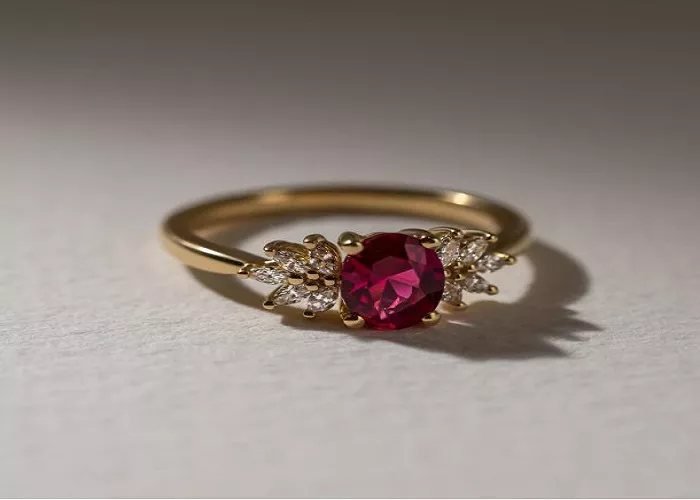Pink sapphires are beautiful and valuable gemstones. They belong to the corundum family, just like rubies and blue sapphires. Because of their rarity and charm, pink sapphires are often used in fine jewelry. However, fake or imitation pink sapphires exist in the market.
If you want to buy a pink sapphire, you must know how to tell if it is real. This guide will teach you the best methods to check authenticity. We will cover understanding pink sapphires, visual inspection, hardness test, refractive index test, checking for inclusions, color consistency test, UV light test, professional gemstone testing, common fake pink sapphires, and buying tips for real pink sapphires.
Understanding Pink Sapphires
Before testing, you should know what a real pink sapphire is.
Natural Pink Sapphire is made by nature and found in mines. Lab-Grown Pink Sapphire is made in a lab but has the same properties as natural sapphire. Fake Pink Sapphire is made from glass, plastic, or other cheap materials.
A real pink sapphire, whether natural or lab-grown, has specific characteristics. It has a hardness of 9 on the Mohs scale, making it very hard, with only diamond being harder. Its refractive index is around 1.76 to 1.77, which measures how light bends inside the stone. The color ranges from light pink to deep pink, with no unnatural shades. Most real sapphires have small natural flaws called inclusions.
Now, let’s learn how to test a pink sapphire.
Visual Inspection
The first step is to look closely at the stone.
Check the color. Real pink sapphires have a natural, even color. Fake stones may have uneven dye or overly bright pink, like bubblegum pink. Some fakes are too perfect, with no color variations.
Look for air bubbles. Glass or plastic imitations often have tiny air bubbles inside. Real sapphires do not have bubbles; they have natural inclusions instead.
Examine the cut and edges. Real sapphires are hard, so their edges stay sharp. Fake stones, like glass, may have worn or rounded edges.
Hardness Test
Pink sapphires are very hard, ranking 9 on the Mohs scale. You can test hardness carefully.
Perform a scratch test, but be careful. Use a material with lower hardness, like quartz, which has a hardness of 7. Gently try to scratch the sapphire. A real sapphire won’t scratch easily. Do not use a diamond, as it can scratch sapphire.
Check resistance to daily wear. Real sapphires resist scratches from everyday items. Fake stones, like glass, get scratches easily.
Refractive Index Test
Light bends differently in real versus fake stones.
Use a refractometer. This tool measures how light bends in the gem. A real pink sapphire has a refractive index of 1.76 to 1.77. Glass or plastic has a much lower refractive index, around 1.50 to 1.70.
Observe the sparkle and brilliance. Real sapphires have strong sparkle due to their high refractive index. Glass or plastic looks duller.
Checking for Inclusions
Most real sapphires have tiny flaws called inclusions.
Use a jeweler’s loupe with 10x magnification. Look for natural inclusions like needle-like rutile or color zoning. Fake stones may be too clean or have gas bubbles.
Types of inclusions in real sapphires include rutile needles, which are tiny silk-like lines, color zoning, which is uneven color distribution, and fingerprint inclusions, which are wispy patterns.
Color Consistency Test
Some fake pink sapphires are dyed.
Rub the stone with acetone. Dip a cotton swab in acetone and rub the stone. If color comes off, it’s dyed and fake. Real sapphire color does not fade.
Check under bright light. Fake stones may show uneven dye patches. Real sapphires have consistent color.
UV Light Test
Some sapphires glow under UV light.
Shine a UV light, also known as a blacklight, on the stone. Some natural pink sapphires show weak fluorescence. Fake stones may glow too brightly, which looks unnatural.
Professional Gemstone Testing
If you are still unsure, get a professional test.
Obtain a gemological lab report. Labs like GIA or AGL can certify the sapphire. They use advanced tools like a spectroscope or microscope.
Perform a density test. Real sapphire has a density of 3.9 to 4.1 g/cm³. Fakes, like glass, have lower density.
Common Fake Pink Sapphires
Some imitations to watch for include pink glass, which lacks hardness and has bubbles, pink synthetic spinel, which is too perfect and has the wrong refractive index, pink tourmaline, which is softer with a hardness of 7 to 7.5, and pink cubic zirconia, which is too sparkly and has lower hardness.
Buying Tips for Real Pink Sapphires
To avoid fakes, follow these tips. Buy from reputable sellers and check reviews. Ask for a gemstone certificate from labs like GIA or AGL. Compare prices, as stones that are too cheap are likely fake. Check the return policy in case you need further testing.
Conclusion
Real pink sapphires are precious and durable. By using these tests, you can avoid fakes. The best methods are visual inspection for color, bubbles, and edges, hardness test for scratch resistance, refractive index check for sparkle and light bending, inclusion check for natural flaws, and professional lab testing for expensive stones.
If you follow these steps, you can confidently buy a real pink sapphire. Always be careful when purchasing gemstones, and when in doubt, consult a professional jeweler.
Related Topics:
What Are White and Yellow Sapphires?


